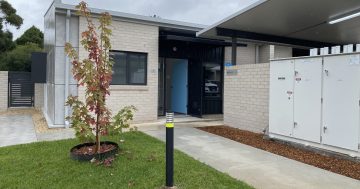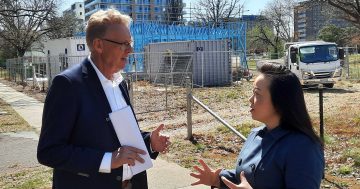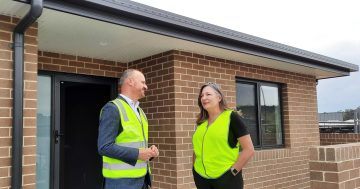
Laying the foundation for progress: an evaluation of the ACT Housing Strategy revealed this week.
Earlier this week we saw the long-awaited launch of the ACT Housing Strategy. This is a big deal given the Strategy aims to set out a roadmap for housing in the ACT for the next decade. This plan will shape planning, supply, housing models and services for years to come. Given this, there is a lot at stake to get it right.
After the agitation about the need to have a long-term plan and replace the 2007 Affordable Housing Action Plan, the reaction of the local community sector has been one of relief and optimism. There are some strong commitments in the Strategy. While light on detail, it is hoped that the Strategy will provide mechanisms to substantially increase stock and reduce the number of families struggling with high housing costs.
One of these is a commitment to increase the proportion of social, community and affordable housing to 15 per cent in future housing releases. This reverses the trend which has seen the proportion of public and community housing drop to just 7 per cent in recent years. It means that we will see around 630 properties in the market each year for the next four years that will be in the reach of low-income households. This is good news. It will mean that families in housing stress may be able to access more appropriate and affordable housing. It is currently unclear how much of this will be devoted to affordable purchase. While this is important, it has limited long-term effect given it usually ends up as general, privately owned housing stock.
The Government has responded to the call of the community to invest $100 million to support public housing. This means an additional 200 public housing properties will be built, and 1,000 existing properties will be renewed. This won’t solve the housing problem for all of the 1,700 people on the public housing waiting list. It should, however, reduce the current 983-day standard waiting time and improve the standard of public housing properties.
A key area of action in the Strategy is focusing on rental options. This is key given we know the very low level of affordable rental stock in the ACT. Rental is key as it often is the only option for households at the lower end of the market. Thousands of Canberrans rely on the private rental market to find a home. As one of the women who participated in a Women’s Centre for Health Matters forum on affordable housing in 2017 pointed out “People who only have casual work – including disability workforce – can’t get a mortgage.”
The Strategy commits to increasing the level of public and community housing. It also commits to working to unlock current private rental to create a market for affordable rental products. As with other parts of the plan, we wait for the detail of how private rental properties will be leveraged. The Government is yet to signal if it is interested in ideas such as providing rebates for private landlords prepared to rent their properties at lower than market rates.
Reducing homelessness is another key focus of the Strategy. It affirms its commitment to a Housing First strategy. This is important, and successful models like Common Ground should be supported. We also need to be flexible in our response to our most marginalised homeless community members. The experience of Safe Shelter has proven that there is a place for crisis responses. These not only provide a safe place to sleep on an emergency basis, but also provide a soft entry point to the service system for people who have had very negative experiences in the past. It is hoped that the Strategy will include room for these types of responses.
Solving our housing problem is not going to be an easy task. We live in a growing community, with our population projected to hit half a million people by 2030. This means that demand for housing will remain high. We have not been immune to high housing costs, and have some of the highest rental costs in the country. And shamefully, we still have some of the highest homelessness rates in the country. It will take an ongoing effort to change these statistics.
The new Housing Strategy is a start but there is still a lot more work to do. There is a need to work hard to flesh out the detail so we have clear action, timeframes and investment over the life of the plan. We need Government champions who will drive the implementation of the plan. We need the private sector to step up and be part of the response to ensure housing for all. We need the community to keep the pressure on, and keep Government accountable. We also need to think about how we can be part of the solution. As our suburbs will evolve and change, we will need to come together and work as local neighbourhoods to see what this means for future development and growth. As one of the women who spoke to Women’s Centre for Health Matters in 2017 said, “diversity in the community strengthens the community”.
I think that the Housing Strategy is a good first step in responding to our housing affordability crisis. What do you think would make the biggest difference in ensuring everyone has somewhere safe to call home?
Thanks to Emma Davidson, Deputy CEO of the Women’s Centre for Health Matters for providing comments from their affordable housing forum.
Rebecca is a member of the Board of Community Housing Canberra and the Early Morning Centre.





















